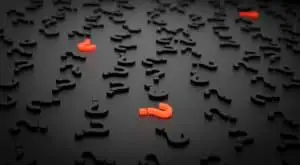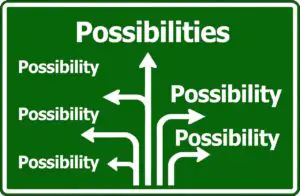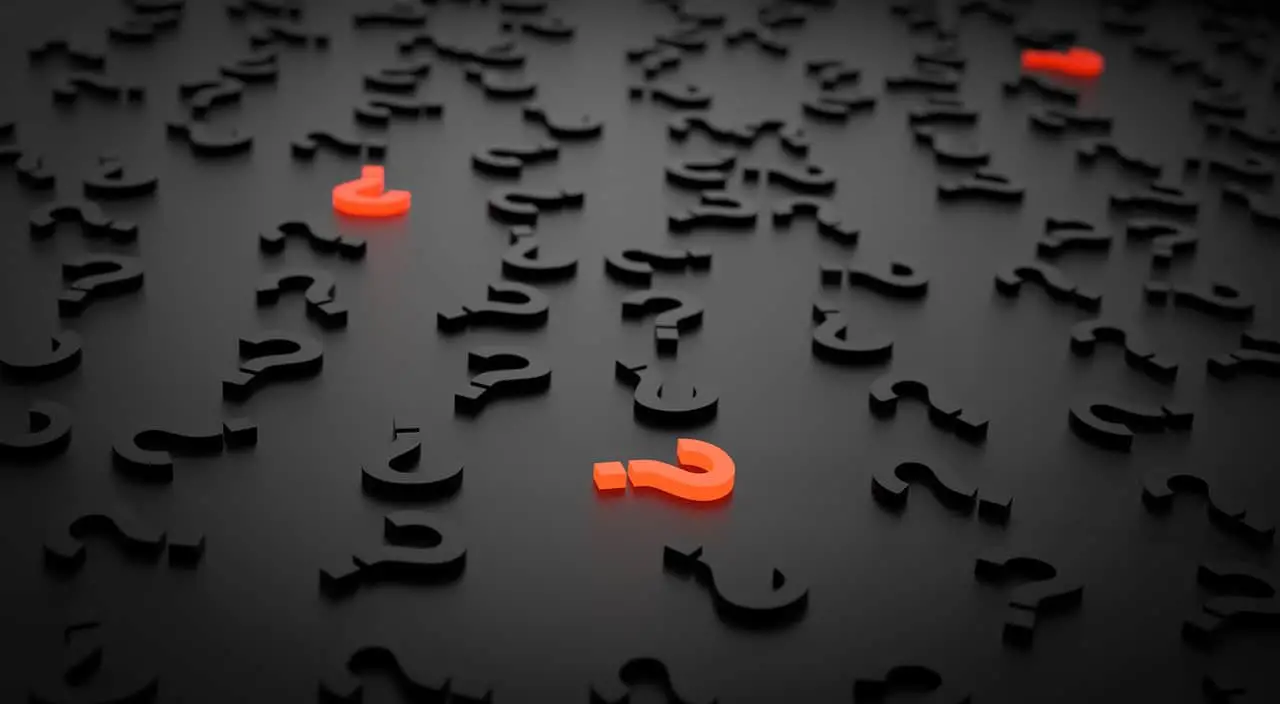Table of Contents
*This post may contain affiliate links. As an Amazon Associate we earn from qualifying purchases.
As a business owner, I am always on the look-out for people ready to buy. It’s only natural. We all want instant gratification for our efforts.Understanding how and the why of the consumer decision making process can help us increase overall sales.
If we sell it, will they buy?
How do we know when our customers are ready to buy? How do we make sure they know our products or services are an option? Do we have what they want or do they know we have a better alternative?

Naturally some of the sales process is dependent on what you sell. Some things are just naturally needed by most everyone. Health and beauty products are a good example. For instance, most everyone uses some type of shampoo, not everyone may use a separate conditioner.
But how do you know when they are going to need and buy shampoo? How do you keep them brand loyal with all the choices and promotions available? And finally, how do you get them to add that conditioner that they didn’t buy before?
All these are the questions help you refine your offerings so that you can better target your efforts as your customer goes through the four primary stages of the consumer decision making process.
[amazon fields=”0078028485″ value=”thumb” image_size=”large” image_align=”center”]
[amazon fields=”0078028485″ value=”button”]
Consumer Decision Making Process Stages
The four primary stages are:
- Identifying a problem or need
- Research and gathering information to solve the problem or need
- Evaluating the information gathered
- Making the purchase
Having stages doesn’t necessarily make the process a long drawn out experience. For some items you may go through all four stages in a matter of just a few seconds or minutes. However, if what you

are offering is a larger purchase then it may take you days, weeks or months to complete the stages.
But for a simple example, let’s look at the behavior of an impulse buying experience. I would be surprised if we all haven’t had a few experiences with an impulse purchase. Why do you think the snake style lines in many brick & mortar stores are now lined with merchandise? Because they encourage those last minute impulse buys, even after you’ve “stopped” shopping.
Satisfying Need Encourages Sales
First, those lines are designed to help you not become bored and irritated waiting to make your purchase. A happy shopper is a more loyal shopper.
Secondly and most importantly they are there to entice you to add another item or two to your purchase.
And I have to admit, I’ve fallen for it more than once. Recently I had a number of purchases and the line was quite long and I admit I hesitated before I joined the line. I shuffled along the snake line filled with pleasantly stocked displays. And the next thing I knew I was caught up in all the additional shopping they had to offer in the line! Then I came to an area with pet toys. You guessed it, they got me. I bought not one but two new toys for my dogs!
I didn’t just grab them, I first thought about if my dogs really “needed” new toys. And I pictured my littered living room with chewed up toys and decided, yes, there is a need (Stage 1- done). Second I looked at the items offered and decided, yes, they are of good quality, similar to others that I have purchased in the past (Stage 2 – done). And finally I looked at the price and based on the quality decided (Stage 3 – done) they were worth it.
So they were added to my other purchases (Stage 4 – done). Just like that, they added another $14.99 to my sale total.
Impulse Buys can Grow Sales
It was an impulse buy and it is a behavior that most retailers are counting on, either brick and mortar or online retailers. Those pop-up offers happen for a reason!

Now, my research wasn’t extensive but I have had dogs for a long time and know the range of pricing for the toys they like, and these were right in line. It also saved me a trip to another store, so a double bonus for me. Could it have waited, yes, but my evaluation led me to decide, now was the time.
Obviously, this is a very simplistic example of the stages and how quickly one can go through them. But it serves as a good example on how a business can capitalize on the process in various ways.
These retail establishments didn’t just throw anything on the shelves for sale. If you really looked at the items, they were very well thought out.
First, most were smaller, useful items. One popular area seemed to be the technology items like power banks, earbuds, and smartphone cases. Another area was designed to help those that had forgotten an upcoming event with items like cleverly themed cocktail napkins, paper plates and gift bags. And they even had an area of small household items like wine glasses, candles, and frames. Of course, I already mentioned the pet area and they had much more including sunglasses and tote bags!
Secondly, most of the items were familiar so it was easy for that quick evaluation. Is it worth it for me to buy now? None of the items were overly pricey. Now, I didn’t look at them all but nothing seemed to be over twenty dollars and most were under ten dollars. Making the decision making process that much easier.
Understanding Your Customer Key to Buying Success
So how can you use the understanding of the four stages of consumer decision making behavior to your advantage for your business?
Let’s look more closely at the behaviors involved with each stage.
The first stage is establishing a need or solving a problem. It is the most important and most basic of the stages. Because if there is no need or problem then there is no purchase required. If you are hungry (and not at home) then you will probably solve that need by buying something to eat.
However, when the need of a product or service is more expensive or going to require more time and energy your customers are going to take the decision making process much more seriously.
And what you sell determines how much you need to be involved in the process. Why do you think you see some industries advertising regularly? Those like automobiles and electronics? Because those typically require some thought, rarely are they an impulse buy.
[amazon fields=”B00JOFS5MM” value=”thumb” image_size=”large” image_align=”center”]
[amazon fields=”B00JOFS5MM” value=”button”]
What are your products Key Benefits?
This is why, as a business, you need to have a clear understanding of all the benefits of your product or service and the needs they fulfill or the problems they solve. This is the basis for your business being in business. What is it that you do for your customers? Do you know all the needs you satisfy? Is it your business or is it the products that you offer?
Why will customers come to you either online or in person? Is it because of the wide selection you offer (easy for them to review – stage 2), or is it the expertise you provide or is it the convenience and pricing you offer?
For you to know what to highlight or promise for your perspective customer base, you need to know which of these is the most important. If for your product or service you are offering convenience and

your customers want expertise then you are not satisfying all of their needs.
Understanding your customer is the most important aspect of every business. The typical business can’t be everything to everyone. You have to choose your niche and satisfy the needs or solve the problems for that niche.
Recognizing the demographics and the Psychographics of your target customer will help you do just that. And, once you’ve figured that out, you can make sure your messaging confirms that you are the best alternative for them.
If you are serious about growing your business and want to learn even more you may find “Understanding Consumer Decision Making: The Means-end Approach to Marketing and Advertising Strategy” by Thomas J. Reynolds and Jerry C. Olsen helpful.
Keep your Business and Product Information Up to Date
In stage 2 your customers are gathering information to help them make their decision in various ways:
- Personal resources: asking friends, family members, co-workers and others if they have an experience with the possible item to be purchased (this can be in person or through social media)
- Experiential resources: this can be actually trying out the item (test drives) to online reviews of others that have purchased the item
- Commercial resources: reviewing advertisements, websites, working with a sales person to reviewing all the options available via online resources
In this stage it is vitally important that as a business you ensure that your online presence is clean. If you’ve had any complaints make sure they have been addressed in a timely manner and the customer is happy again.
It is also recommended that you include as much information as possible online for your customer’s to compare various models that you sell. If they are going to make a purchase, why not give them enough choices so they don’t have a reason to look elsewhere to purchase.
Most consumers today are spending a great deal of time in stage 2 on the internet doing their research. The days of going from store to store listening to a sales pitch are pretty much gone.
Customers Research as they Shop

And the research isn’t always in advance. Smartphones have made researching a product or service at any time an easy process. Therefore as a business you must ensure that your website, product reviews and information is easily accessible and up to date and mobile ready. I can’t begin to tell you how many times I’ll just move on when a site takes too long to load or that the information is outdated.
Stage 3 is the evaluation stage. This is when your customers are reviewing all the information gathered so that can proceed to make an informed decision. For large, complex purchases (especially business services) the customer may develop a spreadsheet of all the pros and cons of the product.
In this stage, they may decide what they want to buy, but not necessarily where they will make the purchase. When I purchased my new car, I did my research, knew what I was willing to pay but not where I wanted to buy the car. There were quite a few dealerships that offered the car I wanted.
The first dealer was less than helpful so I didn’t stay long. The second one wasn’t willing to negotiate to my purchase price range. The third dealer was a winner. They were helpful, willing to negotiate and I drove out with my new car.
[amazon fields=”080581731X” value=”thumb” image_size=”large” image_align=”center”]
[amazon fields=”080581731X” value=”button”]
Post Sale is Important Too
Because of my experience, I have told many people and have steered many new customers to my dealer for a new car.
That is why you can’t forget about Stage 4 – the purchase. This stage is equally as important as the information gathering and evaluation stages. Going back to the basics of understanding your customer’s wants and needs can make all the difference in closing the sale.
If you do then you won’t have to worry that after your customer goes through all the decision making stages that they will end up buying somewhere else.

